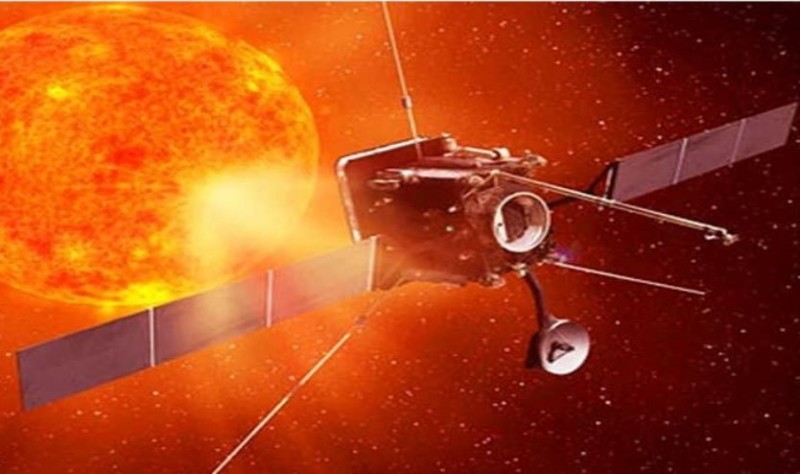
New Delhi: After the triumph of the Chandrayaan-3 mission, India is setting its sights on the Sun. The upcoming Aditya L1 mission will mark India's debut in space-based solar research. Positioned at Lagrange point 1 (L1) of the Sun-Earth system, the spacecraft will circle the Sun in a halo orbit 1.5 million kilometers away, ensuring uninterrupted solar observation. This strategic location will enable Aditya L1 to study the Sun's behaviors without interference from occultations or eclipses.
Aditya L1 will be outfitted with seven distinct instruments or payloads, designed to explore different facets of the Sun, including the photosphere, chromosphere, and corona. These insights promise a deeper understanding of the Sun's conduct and its impact on Earth.
Mission Objectives:
As articulated by the Indian Space Research Organisation (ISRO), the primary goals of the mission encompass:
Investigate the dynamics of the Sun's upper atmosphere, including the chromosphere and corona.
Examine heating processes in the chromosphere and corona, analyze partially ionized plasma, and observe the onset of coronal mass ejections and flares.
Analyze in-situ particle and plasma conditions, contributing data for particle dynamics research originating from the Sun.
Probe the solar corona's physics and heating mechanisms.
Diagnose plasma conditions within coronal loops, including temperature, velocity, and density measurements.
Explore the origin, development, and dynamics of Coronal Mass Ejections (CMEs).
Discern the sequential progression of phenomena across various layers (chromosphere, base, extended corona), leading to solar eruptive events.
Study the Sun's magnetic field topology and magnetic field measurements within the solar corona.
Investigate the drivers of space weather, encompassing solar wind's origin, composition, and dynamics.
Payloads and Components:
Aditya L1 will house two categories of payloads, Remote Sensing Payloads, and In-situ Payloads. The former will encompass four payloads:
Visible Emission Line Coronagraph (VELC): Enabling corona imaging and spectroscopy.
Solar Ultraviolet Imaging Telescope (SUIT): Providing data on photosphere and chromosphere imaging.
High-energy L1 Orbiting X-ray Spectrometer (HEL1OS): Equipped with a Hard X-ray spectrometer to observe the Sun as a star.
Aditya Solar Wind Particle Experiment (ASPEX): Employing Solar wind/Particle Analyzer Protons and heavier Ions with directions.
The In-situ Payloads consist of three components:
Plasma Analyser Package For Aditya (PAPA): Analyzing Solar wind/Particle Analyzer Electrons and heavier Ions with directions.
Advanced Tri-axial High-Resolution Digital Magnetometers: Evaluating In-situ magnetic field (Bx, By, and Bz).
Understanding Lagrange Points:
Lagrange points refer to five positions within a two-body gravitational system where a smaller object can maintain a stable position with minimal fuel consumption. L1, the focus here, lies along the Sun-Earth line, roughly 1% of Earth-Sun distance from Earth.
Aditya L1's Trajectory:
The mission will commence with the launch of ISRO's PSLV XL rocket from Sriharikota. The satellite will first orbit Earth before navigating to Lagrange point L1 through onboard propulsion. The journey from launch to L1 is estimated to span around four months.
Significance of Space-based Solar Study:
Precise measurements in the vast expanse of interplanetary space necessitate observations from a location beyond Earth's magnetic field and atmosphere. Space-based research permits the examination of solar radiation and magnetic fields that evade terrestrial detection. This approach unlocks insights into our solar system's intricate dynamics, advancing our comprehension of the broader Universe.
Aditya L1's Role in Solar Exploration:
While Aditya L1 marks a significant step, it doesn't constitute a comprehensive solar study due to constraints in mass, power, and volume for scientific payloads. The mission's emphasis on specific aspects like coronal behavior necessitates additional instruments and perspectives. Aditya L1's capabilities open doors for exploring phenomena such as Earth-directed CME events and studying the Sun's polar regions, essential for a more comprehensive understanding of solar cycles. In essence, Aditya L1 serves as a pioneering endeavor, laying the groundwork for deeper solar exploration and enhancing our comprehension of the Sun's impact on our solar system.
AAP's Bihar Aspirations: Strengthening Base for 2025 Assembly Polls Shakes Up Political Arena
Uttar Pradesh Congress Eyes Priyanka Gandhi Vadra for Varanasi; Proposal to Challenge PM Modi
Government's Measures to Curb Rice Export Misclassification and Ensure Supply Availability